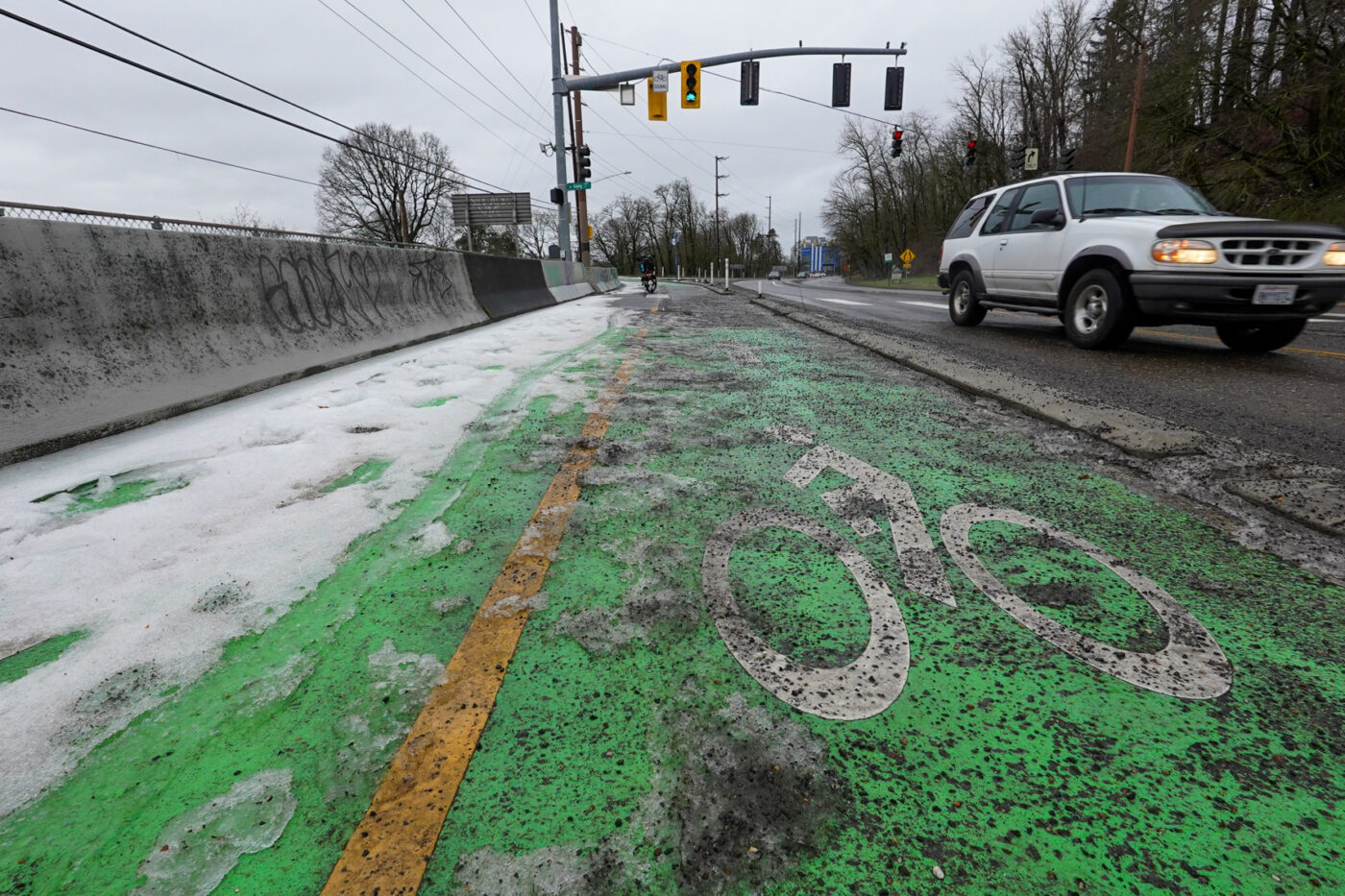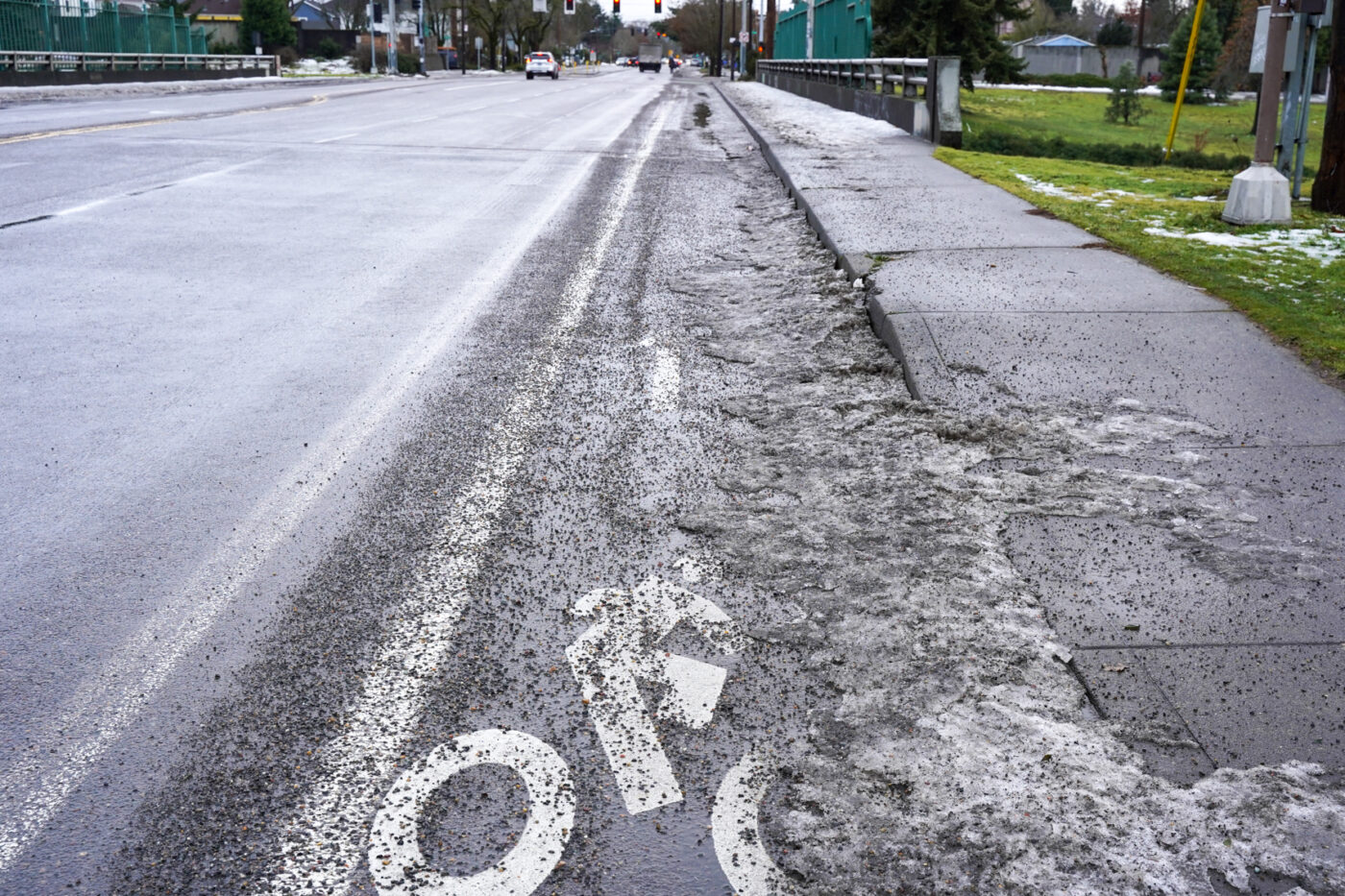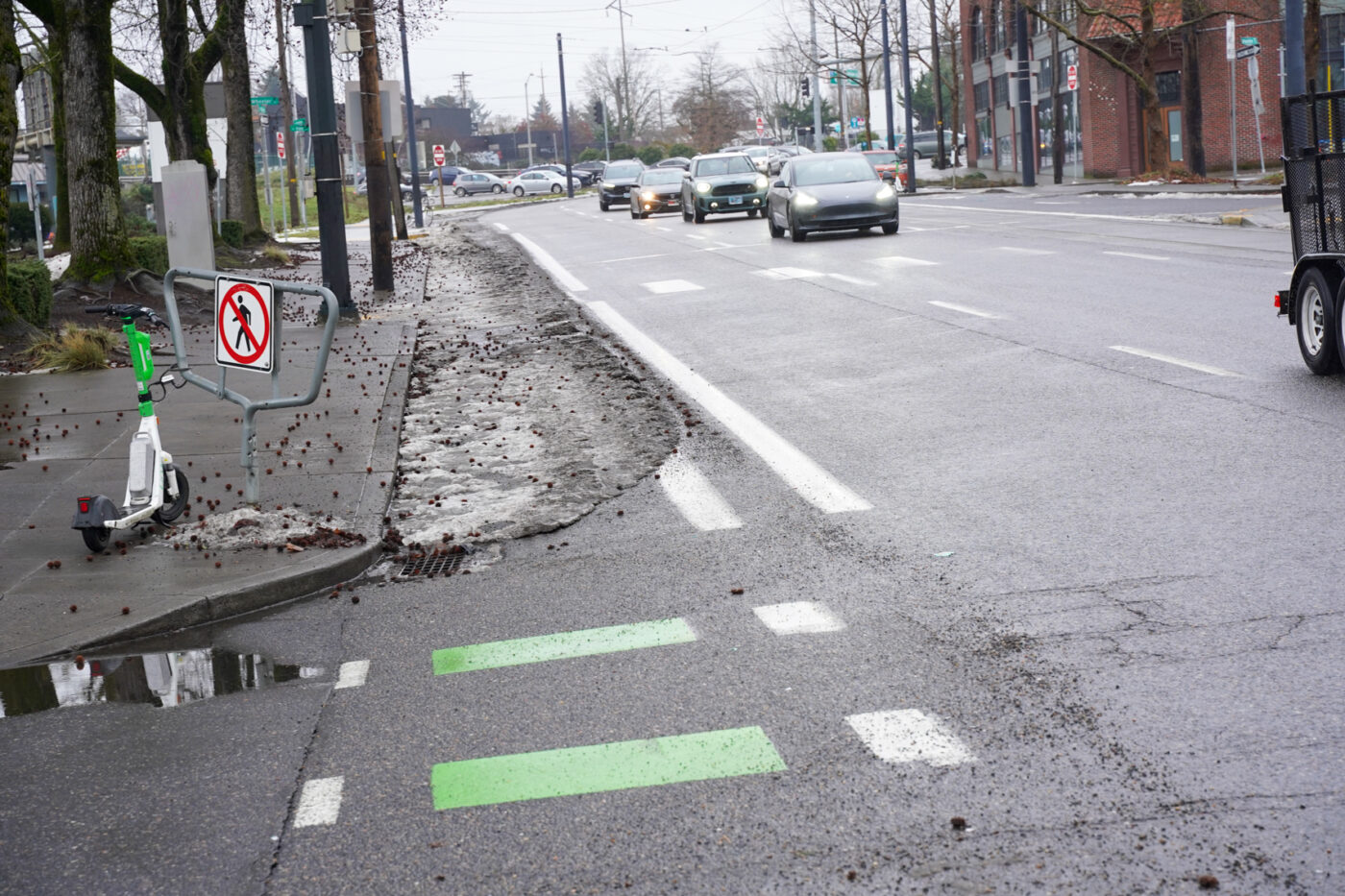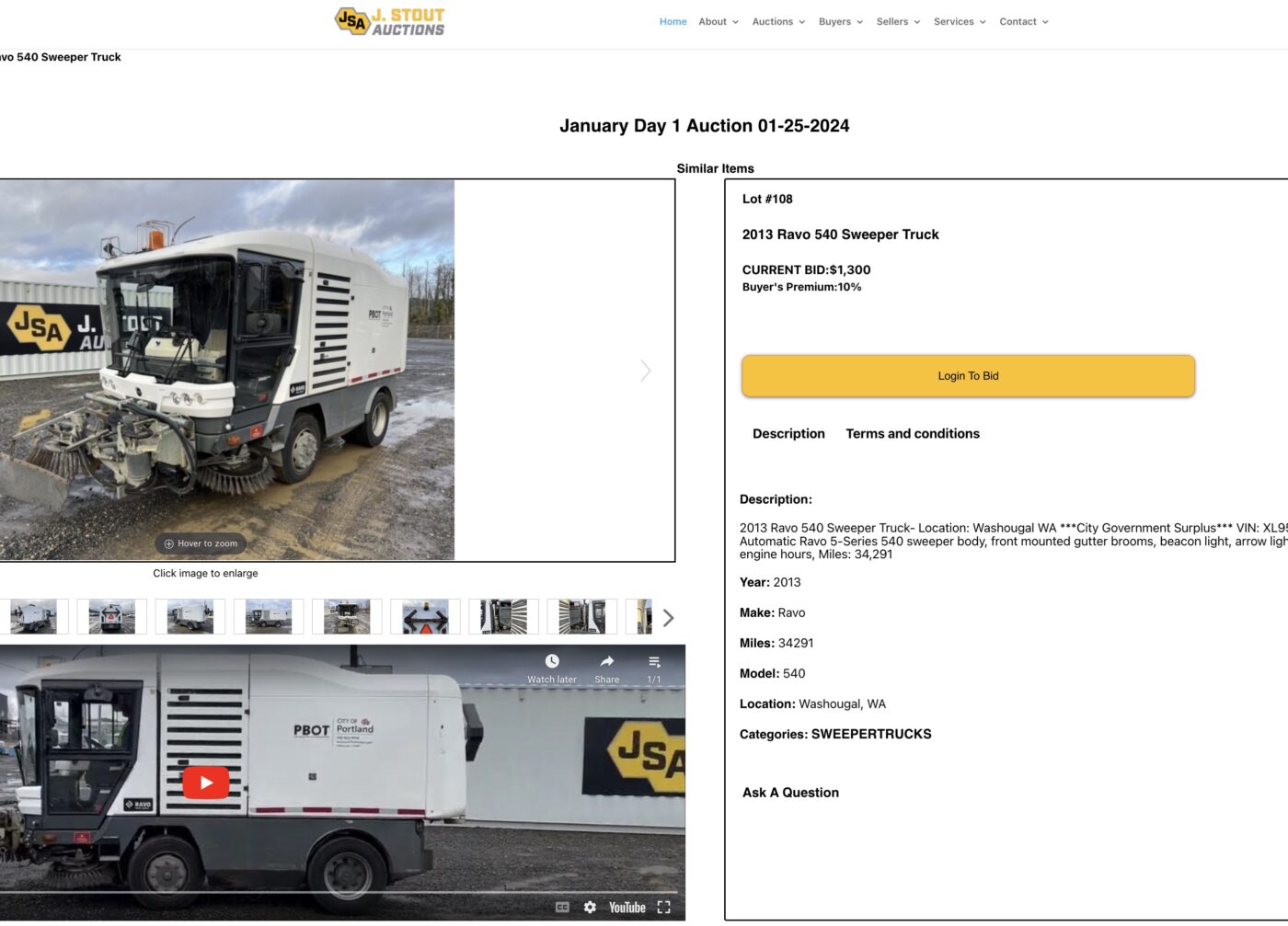
Many transportation bigwigs came together around a table inside the EcoTrust building in the Pearl District this morning for a meeting of the Regional Tolling Advisory Committee. On hand were RTAC members including: a VP of the Portland Metro Chamber, the director of the Oregon Trucking Association, the directors of the Oregon and Washington transportation departments, several Metro councilors, commissioners from Multnomah and other counties, etc.
The Street Trust Executive Director Sarah Iannarone, also an RTAC member, was only able to attend via Zoom. Why? Here’s how she opened one of her comments:
“I’m sorry I’m not there today. The bike lanes aren’t quite as clear as the motor vehicle lanes, so it’s not super safe for me to be commuting down there. So I appreciate you allowing me to Zoom in.”
Yes, the good news is this tragic and terrible storm is behind us. But the bad news is — just like the trauma and damage this storm inflicted on many Portlanders will linger — so too will terrible bike lane conditions and dangerous roads that put everyone outside of a car at risk.





“It’s really dangerous for people cycling on streets right now,” Iannarone shared from her personal X account a few minutes ago. “A lot of pent up demand and frustration from motor vehicle operators, plus seriously hazardous bike lanes, still quite icy and strewn with debris.”
I rolled out for a loop from north Portland down town the Broadway Bridge on Sunday to document conditions. Thankfully, much of the snow and ice I biked through has mostly melted away by now, but the debris and gravel remain. People who are out on bikes are forced to make difficult decisions: brave huge puddles, slippery gravel, branches and clumps of snow — or share adjacent lanes with other road users.
One of our readers, Carlosb_music, shared via an Instagram comment today that, “I was forced out of the bike lane and into the traffic lane due to the gravel and ice and was almost side-swiped twice this morning.”
Portland bike riders like Carlosb_music, Iannarone, and many others are so desperate for cleaner and safer travel lanes that one local activist went so far as to tell us about the sale of an old PBOT street sweeper at auction. Turns out it’s the same Ravo sweeper I wrote about on here 10 years ago when PBOT first added it to their fleet. In that story I shared how PBOT purchased it specifically for its small footprint and ability to sweep inside narrow, protected bike lanes.
When I saw it pop up over the weekend, some local riders said they wanted to purchase it. The current bid is $1,300 — a fraction of what a similar model would sell for (new or used). According to the listing, the sweeper has 34,291 miles on it and its sweeper has been run for 1,958 miles. Whether someone wins the auction and whether they follow through with using it to clean public right-of-ways (which would open up a whole other issue and not be appreciated by PBOT I’m sure), remains to be seen.
For their part, PBOT says the old Ravo sweeper is “at the end of its usable life” and they’ve already got a replacement ready to go. Hopefully, once they’ve caught up with the vast amount of work created by this major storm, they’ll get the new one out on the road to suck up all the gravel, twigs, and other debris that makes riding in bike lanes more dangerous than it should be.
Whatever happens, from the look of some of our city’s bike lanes, I’m not surprised folks are putting in bids to buy an old sweeper. Every time PBOT lays down gravel, it takes a very long time to clean it up. The gravel is deployed just to make sure drivers can continue to use the roads for a few days — but the impact to bicycle (and other mobility device) users can last months.
This year, I plan to more than just watchdog PBOT’s response. Like other Portlanders who’ve literally taken this issue into their own hands, stay tuned for BikePortland to help organize some mass deployments of citizen sweeping brigades citywide. Got a broom?



